Day 8 Friday Dec 1
Karnak temple, Luxor temple, Luxor museum, Public Ferry back to west bank, 700 m walk to apt
Karnak temple, 1971 BC MIDDLE KINGDOM:
We started off at 5.50 am as usual. Driver Hamdi had another client he had not told us about. We took two 1 1/2 liter bottles of water as usual meaning to keep one in the car. But he dropped us off, said we can message another driver friend of his with a 20 min notice. [we ended up doing the day on our own]
Luxor's mammoth Temple of Karnak complex is one of Ancient Egypt's grandest building projects. This ancient temple complex is located in Luxor, on the east bank of the Nile River.
Every pharaoh worth their salt added and amended the buildings here during their reign, stamping their seal on the kingdom's most revered religious sanctuary.
Karnak's grand temple construction began during the reign of Senusret I around 1971 BCE, and took fifteen hundred years to complete, with as many as thirty successive pharaohs adding to it. starting in the Middle Kingdom and ending in the Ptolemaic period.
ROUTING:
The main east-west axis of the temple features pylons 1-6, the southern portion of the temple has pylons 7-10.
We enter through the first pylon, and see the Great Court, which has a few minor temples.
Next is the Hypostyle Hall, Karnak’s highlight. In the east there are two standing obelisks between the fourth and fifth pylons.
the small central sanctuary/ barque sanctuary is next. Further east, there is a courtyard with the Festival Temple of Thutmosis III.
there are still the northern and southern sections. Depending on what's open we can hit up other sites on the map
We saw the southern pylons (7-10).
Avenue of Sphinxes
enter the complex through a grand processional way, flanked on both sides by ram-headed sphinxes.
These once ran all the way to Karnak from Luxor Temple (in downtown modern Luxor), as the triumphant three-kilometer-long thoroughfare connecting the two temples. During the Ancient Egyptian annual Festival of Opet, the statues of Amun, Mut, and Khonsu were paraded out of Karnak, down this avenue to Luxor Temple.
Great Temple of Amun
First Pylon
Built in the era of the Kushite pharaohs (25th Dynasty), the gigantic First Pylon is 113 meters wide with walls 15 meters thick, and still stands 43.5 meters high. It was left unfinished, and fragments of the scaffolding of sun-dried brick used during its construction are still visible.
Great Court
Beyond the Pylon isthe Great Court, which dates from the 22nd Dynasty. It is 103 meters wide by 84 meters deep with colonnades on both sides.
In the north corner of the court is the small Temple of Seti II, which consists of three chapels dedicated respectively (from left to right) to Mut, Amun, and Khons, each with niches for the image of the deity.
One of the most peculiar aspects of this section is the remnants of the mudbrick ramp SEEN IN THE PIC BELOW, right corner near the tree. These ramps likely functioned as a type of scaffolding, allowing masons and carvers to work on the higher levels of the walls. But why was it never dismantled?
Temple of Ramses III
The south colonnade is interrupted by the front part of Ramses III's temple.
Temples of Ramses III is dedicated to Amun
Beyond the temple's Pylon is a Court, with covered passages on either side, the roofs of which are supported on eight Osiris pillars.
On the rear walls of the Pylon towers, Ramses is shown receiving the sign for "jubilee" from Amun, signifying that he would celebrate many more jubilees.
On the far side of the court is the Vestibule of the temple proper, which stands on a higher level,contains shrines for Amun, Mut and Khonsu. . Along the front are four Osiris pillars, while to the rear are four columns with closed capitals.
It has statues of the king as Osiris and a Hypostyle Hall with eight papyrus-bud columns
The Great Temple of Amun is Karnak's main temple building, and has seen additions by many pharaohs over the centuries.
The shape of the temple now is mostly due to Pharaoh Tuthmosis I, who made Thebes capital of the New Kingdom and expanded the original modest temple here, as it no longer seemed adequate to the power of the god and the pharaoh.
The Second Pylon, built by Ramses II, is badly dilapidated.
The towers have been freed from the ruins of later buildings erected in front of them using stone of the Amarna period.
In the center is the huge doorway, formerly preceded by a kind of small vestibule flanked by two statues of Ramses II: one of these (on the right) still stands, of the other, only the legs are left.
THE GREAT COURT AGAIN
some more ram-headed sphinxes
Great Hypostyle Hall
It was begun by Ramesses I, the founder of the 19th Dynasty, during his brief one-year reign. Work was continued by his son, Seti I (1306-1290 BC).
Seti I, is overshadowed by his famous son, Ramesses II. But Seti I is responsible for some gems... the temple at Abydos, his tomb in the Valley of the Kings, and this Hypostyle Hall.
As is the case with many of Seti I’s creations, this hall was later fully completed by Ramesses II.
Measuring 103 meters by 52 meters, it covers an area of more than 5,000 square meters.
The roof was supported on 134 columns in 16 rows. One hundred and twenty-two of these columns are 10 metres (33 ft) tall, and the other 12 are 21 metres (69 ft) tall with a diameter of over 3 metres (9.8 ft). The architraves, on top of these columns weigh 70 tons.
The two central rows, which are higher, consist of 6 papyrus columns with open capitals, while the other rows have 7 columns with closed capitals. The columns represent papyrus thickets which sprang from the primeval swamp (i.e. physical creation).
The roof of the central aisle, 24 meters high, rested on the two central rows of columns and on one of the lower rows on each side, the difference in height being made good by square pillars on top of the lower columns.
Between these pillars were windows with stone lattice work (one of which, on the south side, is almost perfectly preserved).
covered with inscriptions and reliefs of pharaohs making offerings
A statue of Tutankhamun as Amun below
CENTRAL COURT
OBELISKS
Obelisks were symbols of the sun, and also likely symbolized the backbone of Osiris.
In the Central Court beyond the Third Pylon there were formerly four obelisks, two of them set up by Tuthmosis I and two by Tuthmosis II.
The obelisk of Thutmosis I
One of these obelisks is still standing, together with the bases of the other three. It is 21.75 meters high and weighs 143 tons. each obelisk is comprised of a single block of granite shipped all the way from Aswan!
Egyptologists have theorized that the ancient builders used a combination of mudbrick platforms and sand-filled holes to set them in their place
On each face of the obelisk are three vertical inscriptions, the central one being the dedicatory inscription by Tuthmosis I; the other two are additions by Ramses IV and VI.
The obelisks erected by Tuthmosis I marked the former entrance to the temple
Obelisk of Hatshepsut
CENTRAL SANCTUARY
the central sanctuary – Karnak’s ‘Holy of Holies.’ The central pedestal would’ve been where Amun’s symbolic barque was placed during ceremonies.
The ceiling is adorned with stars, while the carvings on the walls are of the standard ceremonial variety. They depict Amun (and the erect Min-Amun) receiving various offering
The first central sanctuary was built during the Middle Kingdom and then replaced with one built by Thutmosis III. And then, over a thousand years later, Alexander the Great’s brother Philip built the shrine we see now.
Many of Thutmosis’s blocks were reused, however. And even some of the original inscriptions have been left untouched.

THE SOUTHERN PYLONS
north-south secondary axis of the Temple of Amun at Karnak consists of four courtyards divided and terminated by four pylons
7th pylon
The seventh pylon began the Amun-Ra temple’s southern processional route. It was located just north of the eighth pylon of Hatshepsut.Two rose granite obelisks stood just south of the statues.
The pylon reached a height of 26m. It was 63.2m in length and 10.6m in width.
Two colossal statues of Thutmose III flanked the pylon’s doorway on the south side.
8th pylon
These seated colossi made from several materials. There are two made of limestone and one of quartzite on the west, and only one, made from white limestone, which remains on the east wing.
On the west wing, the white limestone colossus, representing Amenhotep I, is carved from a single block. The king is seated with his right hand closed and his left hand open, resting on his knees.
behind the statue is the tableau that depicts the massacre of the prisoners Here, Amenhotep II brandishes the white club fitted with a curved blade to strike down the defeated prisoners
9th pylon Horemheb
The ninth pylon was built by Horemheb, the last king of the 18th Dynasty. made up of blocks from Akhenaten’s Aten Temple that he built just east of Karnak 65.6m in length, 11.9m in depth and height of 26.10m.
Sacred Lake
Karnak Temple Sacred Lake is the largest of its kind and was dug by Tuthmosis III (1473-1458 BC). It measures 393 feet (120m) by 252 feet (77m) and is lined with stone wall and has stairways descending into the water.
The lake was used by the priests for ritual washing and ritual navigation. It was also home to the sacred geese of Amun (the goose being another symbol of Amun) and was a symbol of the primeval waters from which life arose in the ancient Egyptian’s idea of creation.
It was surrounded by storerooms and living quarters for the priests. There was also an aviary for aquatic birds.



STATUE OF KHEPRI [the divine scarab beetle]
Khepri is a scarab god/solar deity in ancient Egyptian religion who represents the rising or morning sun. creation and the renewal of life. The Egyptians saw the dung beetle rolling the dung in to its hole in the earth and reappear; they corelated this as the sun diappearing into the underworld and being reborn again in the morning
Northwest of the sacred lake, there’s a huge stone scarab beetle placed by Amenhotep III. The carving beneath it depicts the king making offerings to Atum of Heliopolis.
tourists go round the beetle seven times for GOOD LUCK in love life!
The obelisk of Hatshepsut, daughter of Thutmosis I
This is an obelisk erected by Hatshepsut, Thutmosis I’s daughter. At 29.56 m, it’s the tallest obelisk which still stands in Egypt.
The world’s tallest stands in Rome. It was first carved by Thutmosis III, Hatshepsut’s stepson and co-regent, and also came from Karnak. (Istanbul’s Obelisk of Theodosius comes from Karnak as well.)
When Hatshepsut’s obelisk was erected, this would’ve been Karnak Temple’s western extremity. Later, after Hatshepsut’s death, Thutmosis III built a wall around it, obscuring most of it.
colossal statues of Amun and his consort, Amunet, that were dedicated by Tutankhamun
Great Festival Temple of Tuthmosis III
The Temple of Ptah is a little temple built by Thutmosis III and enlarged by Pharaoh Shabaka and the Ptolemies. The Greek influence can be seen in the floral capitals of the columns.
Hatshepsut obelisk and court
Osiris statue colums
Ram headed sphinxes again on the way back
Royal barque relief
WE fixed a ride on CAREEM and got dropped at Luxor temple. Did not call Hamdi's friend for the day. Careem was very easy and cheap, just 19 egp
Report continues






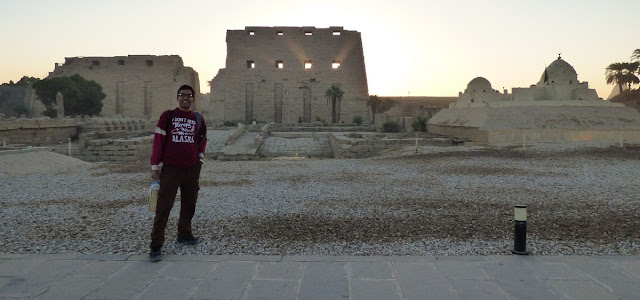











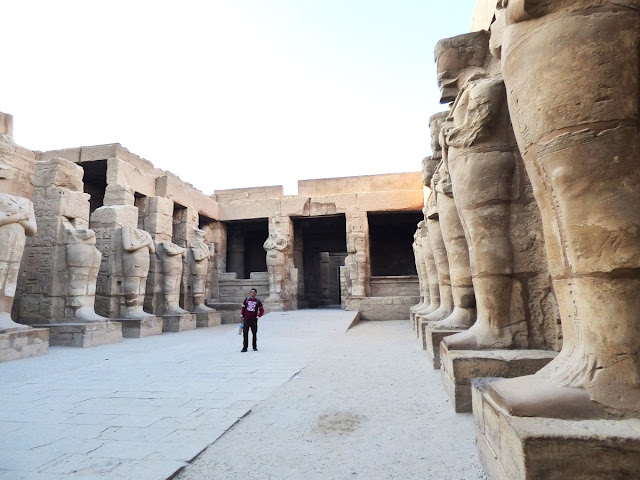


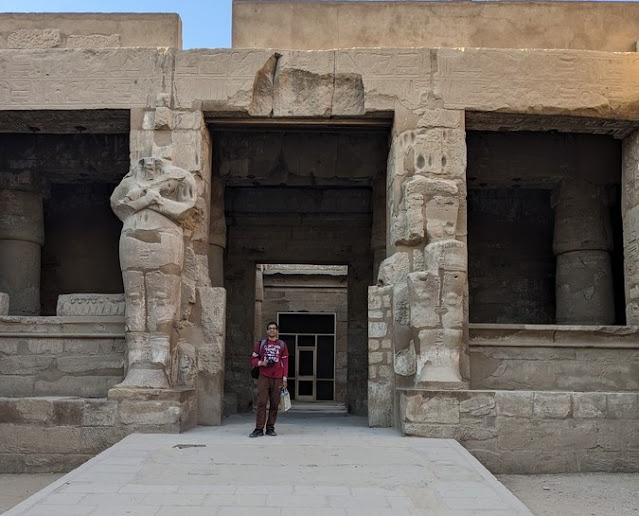

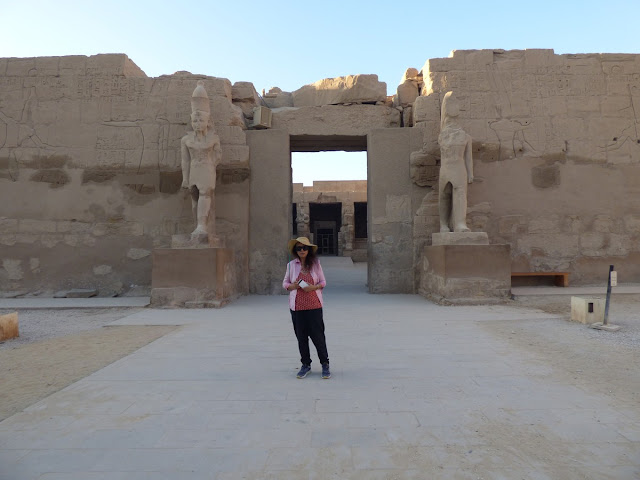



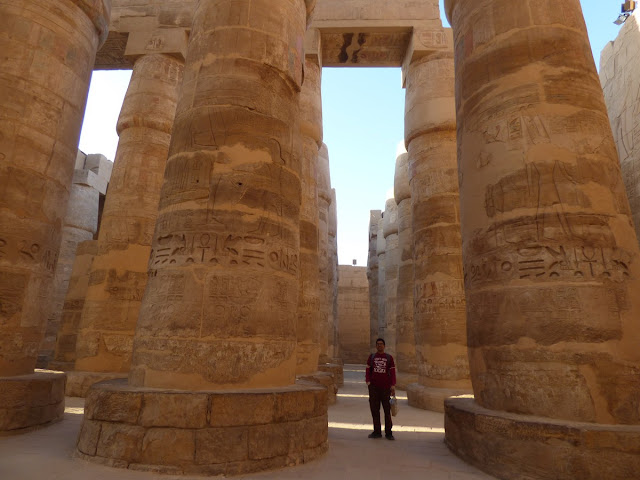
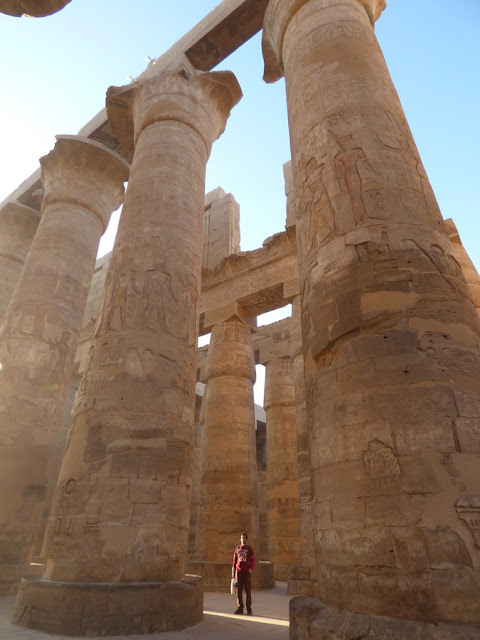


































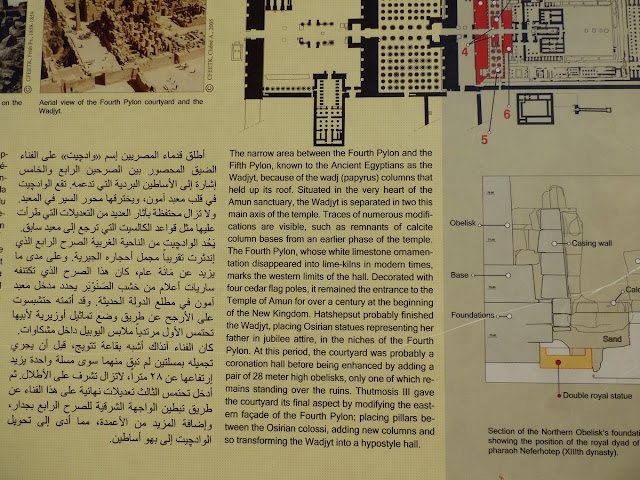








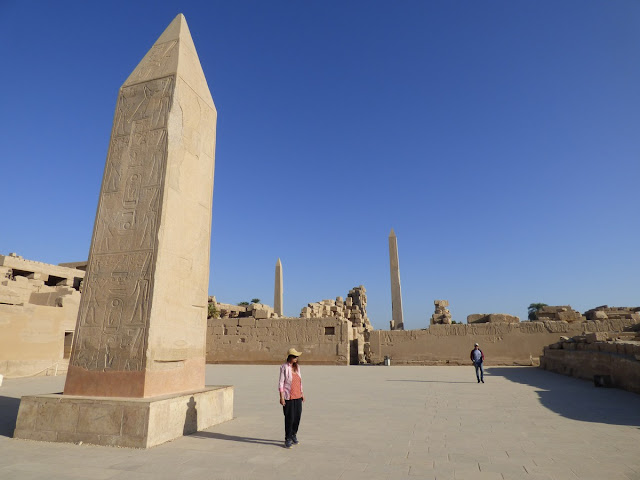
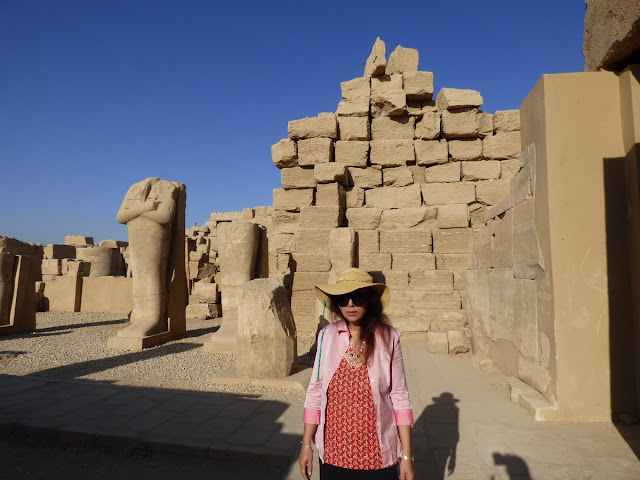


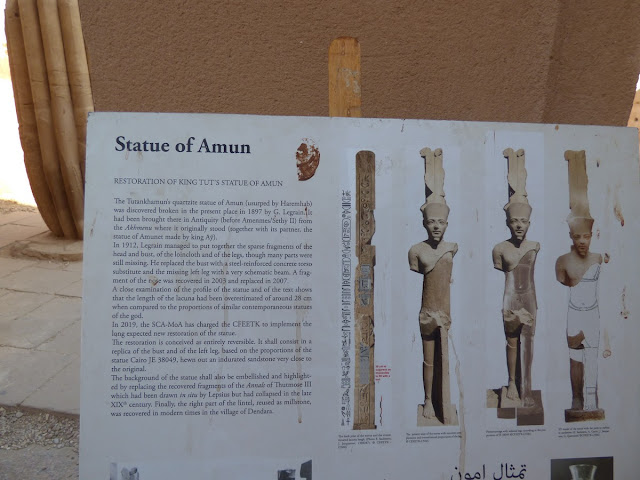
















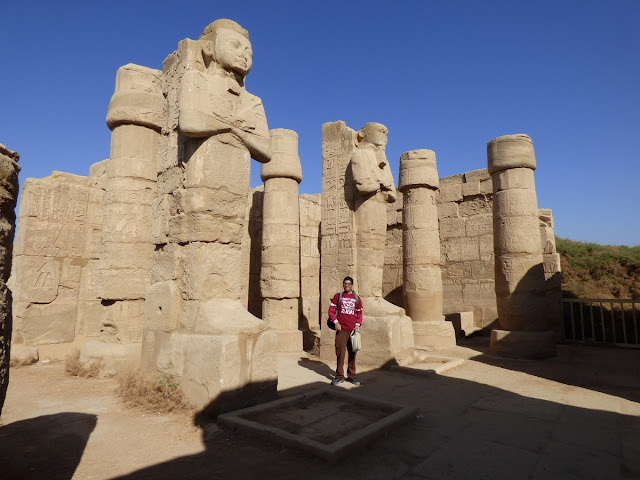











No comments:
Post a Comment